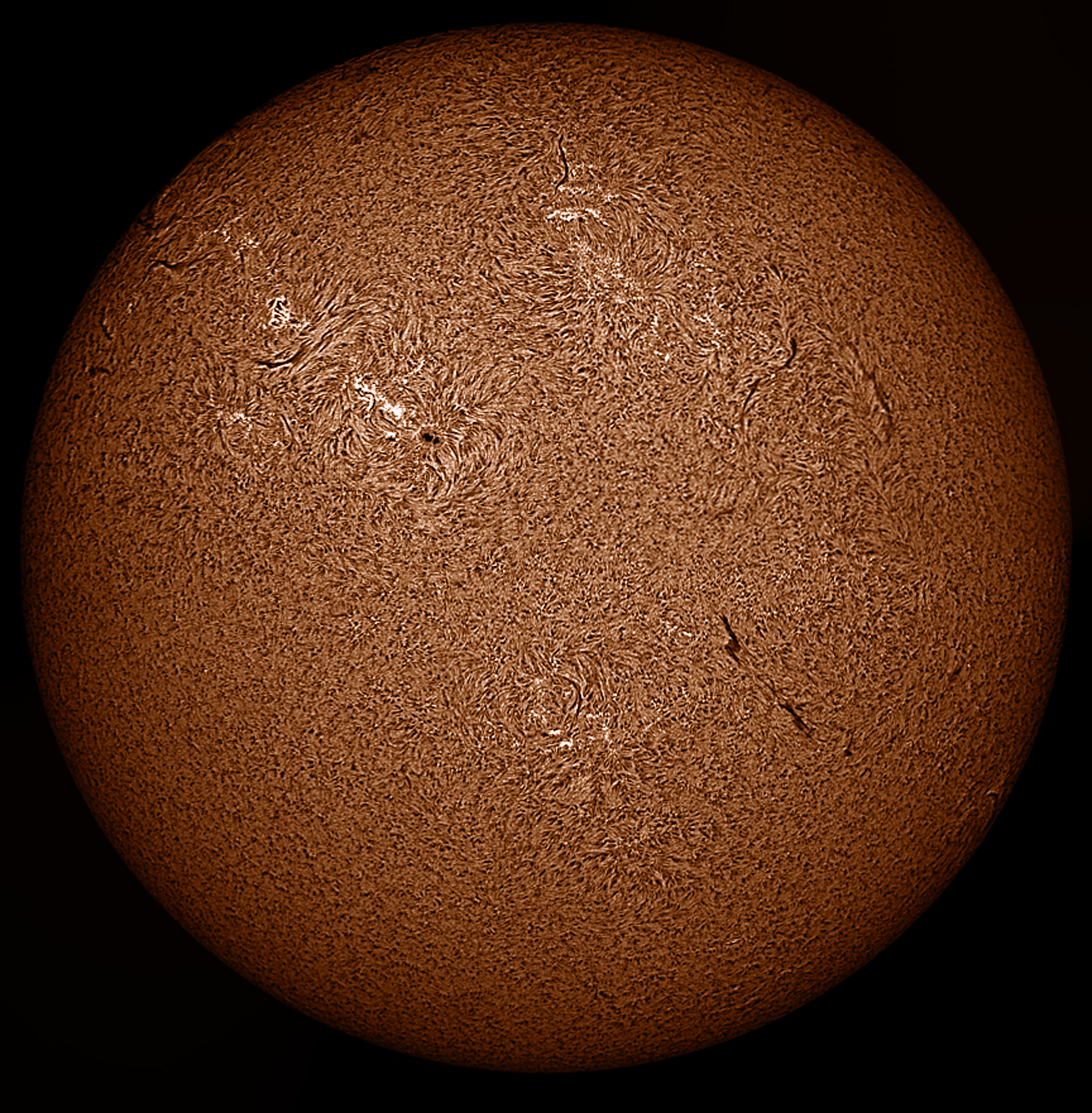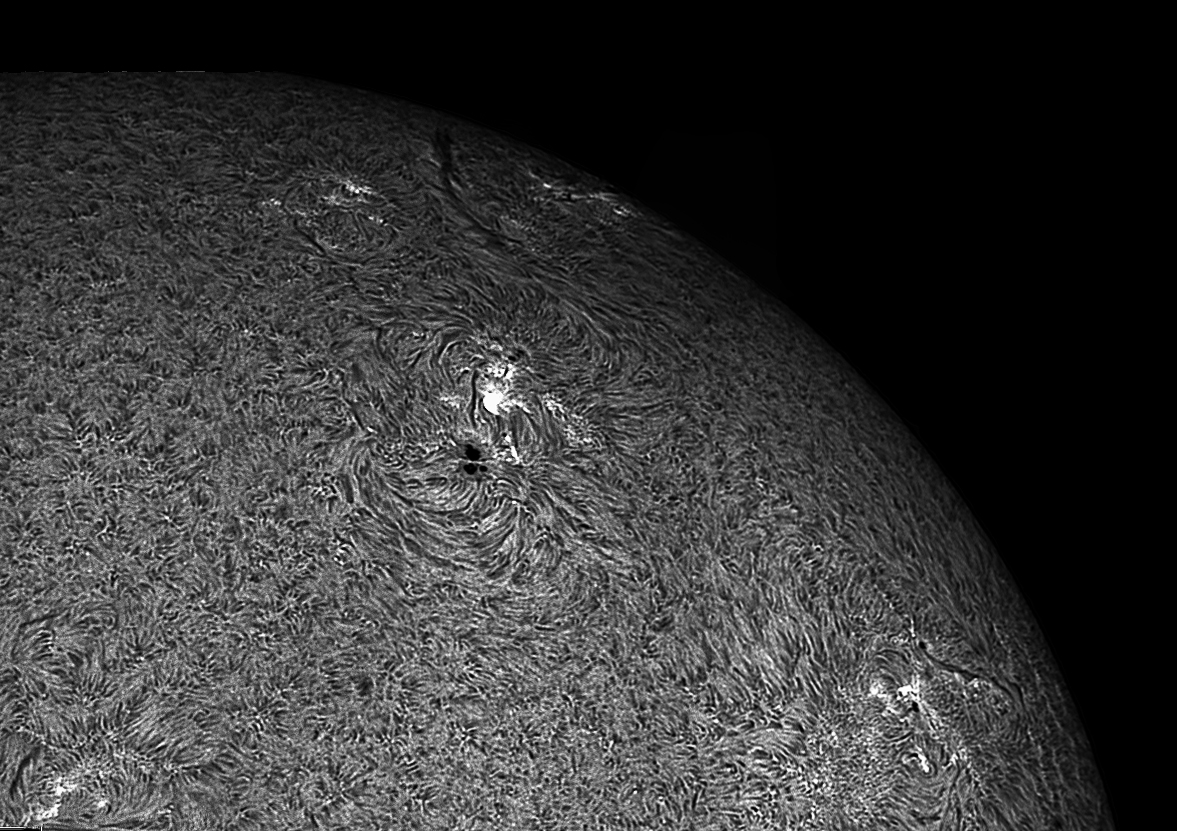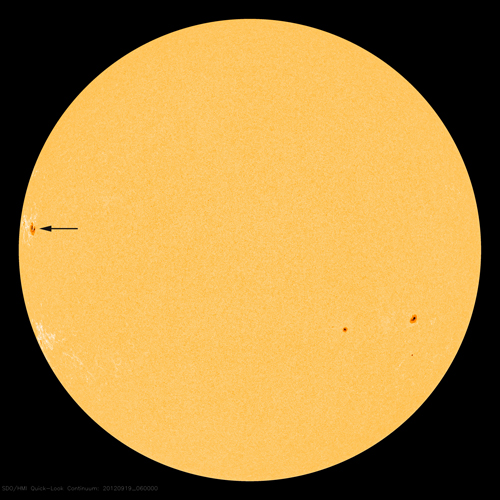Just got some videos from Imaging Source DMK21 camera and processed them.. This is happening on Sun today.
Sun today in halpha wavelength
Just got some videos from Imaging Source DMK21 camera and processed them.. This is happening on Sun today.
Just got some videos from Imaging Source DMK21 camera and processed them.. This is happening on Sun today.
9 AVI files, 5,000 frames each, AVIStack, Registax and Photoshop.


Someone in Lunt mailing list showed me 'solar action'.. I was in search of a method to easily color the mono images from halpha telescope. This tool is really a blessing, though i only like to color tool, others seems worthless to me.
Following is the first attempt with 'solar action'.

There are unlimited ways to process an astronomical image. Every imager has his/her own taste for the 'pretty picture'.
Some halpha imagers process by inverting the B/W image.. and then add colors to the image. It makes the filaments on the surface look like 3 dimensional.
I did just that with the following image and to me, it seems the 3D effect does appear with this processing technique.. what do you all think about it?

Six AVIs, with 5,000 frames in each file, 800 best selected among them, using AVIStack, Registax and photoshop, here is our Mighty Sun, with the surface temperature of about 5,800 degrees celcius, with the core temperature of 15,000,000 celcius.
With this temperature it is fusing 600 million tons of hydrogen every second! 4 million tons of matter is converted into pure energy, every second and in only 10% of its volume and it will continue to do that, for the next 7,000,000,000 years! Sun is busy.


All images were shot with DMK21 camera and with Lunt60 dedicated Halpha telescope with Televue 2.5X barlow attached.
Again each file was of 5,000 images, 800 best were selected aligned and stacked in AVIStack and sharpened in Registax. Final touches were done with Photoshop CS5.



Okay so today was my off day from work.. what better way to use your holiday than to spend all day with your dearest one.. (okay okay.. after my wife :)
Sky was all clear and seeing was also very stable. So i attached my barlow lens which magnify the image 2.4 times than the original image. Before the televue, barlow lenses were thought to degrade the view so astronomy community always tended to avoid these lenses. Things have long changed now. Telvue 2.5 X barlow does not even tell you its there.
I shot several AVIs files, each with 5,000 images and processed 800 out of them and made a mosaic.
Here is the color version and original size of the mosaic.

Our sun is quite these days with very few sunspots at the visible surface. There is no good solar prominences as well.
Few days ago, i imaged a small sunspot, which is quite huge by our terrestrial standards. This spot has moved to the eastern limb now and a new region has appeared from the west (see arrowhead below). On the full disk it is barely definable but in my image our Sun has just shown us its broken heart!

Click here for high resolution image

At least three sunspots have merged to create this group. Coming forecast seems to be clear for my location so i will try to see how this region evolve in the near future. Sun is a highly dynamic system and it is always going through visual changes. I also saw this region with Halpha telescope but i think i would wait for some time to image it in halpha light.
The sky was covered with patches of clouds everywhere, yet i tried to have first shots from the new Astrozap solar filter. The new filter was much better designed to fit on the front of the telescope, with three screws attached, the fit was in just a few seconds.
First i used my 25 mm eyepice at the back of the scope and the visual views were not bad but so very detailed since the earth clouds were moving across the surface of the sun. But the two sunspots and three tiny ones were clearly visible.
Then i attached DMK21 camera and shot an AVI of about 20,000 images. Quickly processed it with AVIStack and Registax and here is the final image, my first from the new filter!
I am happy to see the individual granules on the surface of the sun which i could not have seen with the Lunt60 Halpha solar scope previously. Solar granule is a small bubble in the image below and typically is around a thousand kilometer wide.. that's about the distance from Lahore to Karachi! The bright part is where the hot material is coming up on the surface and the dark boundary is where it is falling down again. These granules are the convection zones on the sun's surface.
The big sunspot in the middle is quite small when you see it on the solar disk here. I very roughly figured the size of this whole sunspot to be about 40 granules, so that would make it to be around 40,000 km wide. Thats like three times the size of our planet Earth. Sun is huge!

The whole disk of the sun. Image from Spaceweather